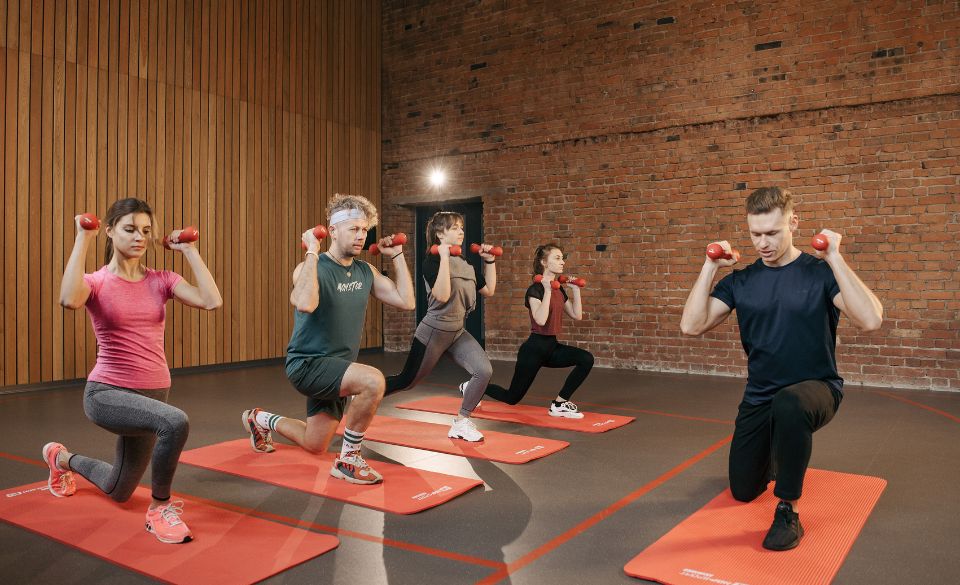
Dangers Of Exercising With High Blood Pressure
Page Contents
Exercise is generally beneficial for overall health and can play a crucial role in managing blood pressure. However, if you have high blood pressure, also known as hypertension, it’s important to understand the potential dangers of exercising without proper guidance. While exercise can have positive effects on blood pressure, there are certain considerations and precautions that need to be taken into account.
Is It Bad to Exercise When Your Blood Pressure is High?
When you have high blood pressure, also known as hypertension, you might be concerned about whether it’s safe to engage in exercise. It’s natural to wonder if exercise could potentially worsen your condition or pose risks to your health. The answer is not as straightforward as a simple “yes” or “no.” Let’s explore the topic further to understand the potential effects of exercise on high blood pressure.
Firstly, it’s important to note that in most cases, exercise is generally beneficial for individuals with high blood pressure. Regular physical activity has been shown to help lower blood pressure and reduce the risk of cardiovascular diseases. However, it’s crucial to approach exercise with caution and follow appropriate guidelines.
The risks associated with exercising when you have high blood pressure depend on various factors, including the severity of your condition, overall cardiovascular health, and the type and intensity of exercise. For individuals with uncontrolled hypertension or very high blood pressure, engaging in intense or vigorous exercise could temporarily elevate blood pressure to dangerous levels, increasing the risk of complications.
It’s essential to consult with a healthcare professional who can evaluate your specific situation and provide guidance tailored to your needs. They will consider factors such as your blood pressure readings, medication regimen, presence of other medical conditions, and overall fitness level to determine what level of exercise is safe for you.
In many cases, moderate-intensity aerobic exercises such as brisk walking, cycling, or swimming are generally safe and beneficial for individuals with high blood pressure. These activities help strengthen the heart, improve blood flow, and contribute to overall cardiovascular health. It’s important to start gradually, listen to your body, and avoid overexertion.
Dangers of Exercising with High Blood Pressure
While exercise is generally beneficial for individuals with high blood pressure, it’s important to be aware of potential dangers and risks that can arise if exercise is not approached with caution. Understanding these dangers can help you make informed decisions and take appropriate measures to ensure your safety while exercising with high blood pressure.
1. Spike in Blood Pressure: Intense or vigorous exercise can cause a temporary spike in blood pressure during the activity itself. For individuals with uncontrolled or very high blood pressure, this increase can be more significant and potentially lead to adverse events such as heart attacks, strokes, or other cardiovascular complications. It’s crucial to monitor your blood pressure levels closely and avoid exercises that place excessive strain on your cardiovascular system.
2. Cardiovascular Stress: Engaging in exercises that involve heavy lifting or straining, such as weightlifting or powerlifting, can put significant stress on the cardiovascular system. These activities can cause a sudden and substantial increase in blood pressure, increasing the risk of complications. It’s important to be cautious when participating in activities that involve breath-holding or straining against resistance.
3. Potential for Injuries: Individuals with high blood pressure may have underlying cardiovascular conditions that make them more prone to injuries during exercise. The strain placed on the heart and blood vessels during intense physical activity can increase the risk of heart-related incidents or other injuries. It’s important to be aware of your limitations, start with moderate-intensity exercises, and progress gradually while listening to your body’s signals.
4. Interaction with Medications: Certain medications prescribed for high blood pressure can impact heart rate and blood pressure response during exercise. It’s crucial to communicate with your healthcare provider to understand how your medications may interact with exercise. They can provide guidance on the appropriate timing, dosage adjustments, or specific exercises to avoid potential complications.
What Blood Pressure is Too High for Exercise?
Determining what blood pressure is too high for exercise requires an individualized approach. In general, it’s recommended to keep systolic blood pressure (the top number) below 180 mmHg and diastolic blood pressure (the bottom number) below 110 mmHg before engaging in moderate-intensity exercise. However, these thresholds may vary based on your overall health, presence of other medical conditions, and guidance from your healthcare provider.
Three Easy Exercises to Lower Blood Pressure Immediately
While it’s essential to consult with a healthcare professional before starting any exercise program with high blood pressure, there are a few gentle exercises that may help lower blood pressure immediately:
Brisk Walking: Taking a brisk walk for 30 minutes can have a positive impact on blood pressure. Aim for a pace that raises your heart rate slightly without causing excessive strain.
Cycling: Whether on a stationary bike or outdoors, cycling is a low-impact exercise that can help lower blood pressure. Start with a comfortable resistance level and gradually increase intensity as your fitness improves.
Swimming: Swimming provides a full-body workout while being gentle on the joints. The water’s buoyancy reduces the impact on the body, making it an ideal exercise for individuals with high blood pressure.
Remember to start slowly, listen to your body, and stop exercising if you experience any unusual symptoms such as chest pain, dizziness, or shortness of breath.
When is the Best Time to Exercise with High Blood Pressure?
Determining the best time to exercise with high blood pressure depends on various factors, including your medication routine, overall health condition, and personal preferences. While there isn’t a one-size-fits-all answer, here are some considerations to help you determine the optimal time for exercise:
Medication Timing
If you take medication to manage your high blood pressure, it’s important to consider the timing of your doses in relation to your exercise routine. Some medications may have specific recommendations regarding when to take them in relation to physical activity. It’s crucial to consult with your healthcare provider or pharmacist to understand any potential interactions or effects of exercise on your medications.
Natural Blood Pressure Variations
Blood pressure naturally fluctuates throughout the day, typically being lower during rest and higher during physical activity or stress. Understanding your individual blood pressure patterns can help you choose the most suitable exercise time. Generally, it’s recommended to avoid exercising during the peak effectiveness period of your medications when blood pressure may be at its lowest.
Personal Energy Levels
Consider your personal energy levels throughout the day. Some individuals find that exercising in the morning helps them start the day feeling energized and refreshed. Others may prefer exercising in the afternoon or evening when they have more energy or to relieve stress accumulated throughout the day. Choose a time when you feel most motivated and capable of engaging in physical activity consistently.
Lifestyle and Schedule
Your lifestyle and daily schedule may also influence the best time for exercise. If you have a busy morning routine or work commitments, finding time to exercise in the evening may be more feasible. Conversely, if you prefer to start your day with physical activity, you can adjust your schedule accordingly. The key is to choose a time when you can prioritize exercise and make it a regular part of your routine.
Personal Response to Exercise
Consider how your body responds to exercise at different times of the day. Some individuals may find that exercising in the morning helps them feel more energized and focused throughout the day. Others may feel more sluggish or experience a drop in blood pressure immediately after exercise. Pay attention to your body’s signals and choose a time that allows you to exercise comfortably and enjoyably.
Ultimately, the best time to exercise with high blood pressure is unique to each individual. It’s important to listen to your body, consider your medication schedule, and consult with your healthcare provider. They can provide personalized guidance based on your specific circumstances and help you determine the most suitable time to engage in physical activity.
Final Words
While exercise is generally beneficial for blood pressure management, exercising with high blood pressure requires careful consideration and professional guidance. The dangers of exercising with high blood pressure can include spikes in blood pressure and potential cardiovascular complications. It’s crucial to work closely with a healthcare professional who can provide personalized advice and monitoring to ensure your exercise routine is safe and effective. By taking the necessary precautions, you can incorporate exercise into your lifestyle to support overall cardiovascular health and blood pressure management.



